This article was originally published in the September/October 2022 Issue of the WatchTime print magazine.
Underwater explorers and frogmen play as prominent a role in the history of Omega’s dive watches as do the seahorse and the world’s most famous secret agent.
The history of Omega’s dive watches not only begins at an extremely early date, but also with a timepiece that stands out more for its elegance than for its rugged exterior. But this isn’t surprising because those years were the heyday of Art Deco and thus also of rectangular watches. Omega’s Marine watch pursued a revolutionary approach to case construction as early as 1932. The double case achieved water resistance with the aid of a tension lever that pressed the inner housing against a leather gasket. The outer crystal was made of scratch-resistant sapphire, which was a rarity at the time. In addition to Staybrite stainless steel, this watch was also available with a gold case. A sealskin strap provided resistance to saltwater, and the folding clasp included a mechanism for adjustment of the strap’s length.

In 1936, three Marine watches were lowered into Lake Geneva to a depth of 73 meters to test their water resistance. To make the ordeal even more rigorous, they had previously been immersed in water heated to 185° Fahrenheit for 4 minutes. The subsequent plunge into the lake, where the water was a chilly 41 degrees, lasted half an hour. All three watches still functioned perfectly after this extreme test and showed no traces of moisture inside their cases. The following year, the LSRH (Laboratoire Suisse des Recherches Horlogères) in Neuchâtel also tested a Marine: it spent 14 hours exposed to a pressure corresponding to a depth of 135 meters below the water’s surface. Even during this arduous test, no water penetrated into the watch.
It was during this period that diving first began to develop and Omega’s Marine was soon worn for underwater missions. The diving pioneer Yves Le Prieur, who invented the first self-contained underwater breathing apparatus in 1926, later wore a Marine, as did underwater explorer William Beebe, who wore this watch down to a depth of 14 meters in the Pacific in 1936. But the Marine was ahead of its time and, despite its water resistance, didn’t catch on with “ordinary” customers because its outer case had to be removed before you could wind it.
Omega relaunched the Marine in 2007. Limited to just 135 timepieces, the double-cased watch was part of Omega’s Museum Collection. An inner case made of white gold nested inside a red-gold outer case. Like its ancestor, this re-edition was powered by a hand-wound movement. But here Omega’s Caliber 2007 with co-axial escapement embodied a new level of high-mech and could be viewed through a glass window when the case was open.

The water-resistant Seamaster collection, which was presented in 1948, also developed into a commercial success story. These watches, which are elegant by today’s standards, did not immediately reveal their robustness, which resulted from Omega’s experience with water-resistant military watches. The watertightness was achieved with a screwdown back and innovative O-ring seals, which were initially made of lead but later from rubber. In addition to their robustness, these early Seamaster models owed their success to the fact that an automatic movement ticked inside their cases, at a time when self-winding movements were by no means a matter of course. In 1943, Omega launched its first automatic movement: Caliber 28.10. It relied on a hammer mechanism, which allowed the winding weight to move only within a limited range. This winding mechanism made it possible to reduce the movement’s height to just 4.8 mm, so these automatic calibers could keep time inside slim cases. These robust and easy-to-read Seamaster models contributed greatly to Omega’s good reputation during this period.

Since 1958, a seahorse has adorned the backs of the cases of the watches in this line as a symbol of water resistance. T he symbol has become one of the most well-known in the watch world. The logo was invented by the decorator Jean-Pierre Borle, who saw a painting in Venice of the Roman sea god Neptune, whose chariot was drawn by a team of seahorses. This is why Omega’s seahorse is shown wearing a bridle. The watches in the Seamaster line, which premiered in 1948, were suitable for swimming, but despite the seagoing animal on the back of the case, none of these models was considered a genuine diving watch.
This changed in 1957 when the Seamaster 300 was introduced. With a rotating bezel to preset the intended dive time, this watch heralded the era of the modern dive watch at Omega. This self-winding timepiece was developed for professional divers and could withstand water pressure to a depth of 200 meters, although its name suggested water resistance to 300 meters. The water resistance was primarily due to the newly developed doubly sealed crown, which exterior water pressure pressed even more firmly against the case, and to the crystal, which was equipped with a tension ring and was three times thicker than a conventional crystal. Luminous arrowheads on the tips of the hands and a matte black dial with luminous indexes made the face easy to read under water. The rotating bezel clicked into place to preserve its setting and was equipped with a luminous marker. If the diver turned the bezel until its luminous marker was tangent with the tip of the minute hand before the dive, then the current dive time could be read on the minute scale of the rotating bezel at any time during the dive. Interestingly, there were also models with a countdown scale for diving. The planned dive time was preset before the dive and afterward, while under water, the diver could see how many minutes remained until it was time to begin the ascent to the surface.

Various professional divers relied on the Seamaster 300. For example, the French diver Alain Julien and his two colleagues wore this model on more than 1,500 dives between 1958 and 1959. Their watches withstood all the stresses and ordeals, which included the hard work of repairing docks or laying underwater pipes. Even after several days at a depth of 45 meters, one Seamaster restarted without any problems. A plane had sunk after an emergency water landing, but everyone on board survived unscathed. The pilot, who was also a diver, recovered his watch from the wreckage and later wrote a letter of thanks to Omega.

The next generation of the Seamaster 300 came onto the market in 1960. Like its predecessors, its dial had Arabic numerals at the 3, 6, 9 and 12, but now offered modified luminous indexes and, most importantly, modified hands: a diamond-shaped hour hand and a bar-shaped minute hand with a slim tip. Caliber 28 RA SC-501 was followed by Caliber 552. Two years later, the Seamaster 300 was also available with a bar-shaped hour hand with a slender tip, rectangular indexes and a large luminous triangle instead of the numeral 12. The rotating bezel with larger numerals and a clearer luminous triangle was introduced in 1964. This model had already been part of a team one year prior to its official launch, when the famous ocean explorer Jacques-Yves Cousteau began operating two underwater stations off the coast of Sudan at depths of 11 and 25 meters. At times, these stations housed several divers for a month. Frogmen of the Royal Navy also wore this model. Beginning in 1966, the Seamaster was equipped with a screw-down crown in accordance with military specifications.

Today, the new edition of the Seamaster 300 is an integral part of the collection. It’s available with a black or blue dial in a steel case, with either a leather strap or a metal bracelet, in a two-tone case, in various shades of gold, and even in the new bronze-gold alloy. Like all Omega watches, these retro models are powered by modern movements with co-axial escapement and include components crafted from special materials for strong protection against magnetic fields. The Swiss Federal Institute of Metrology (METAS) rigorously tests each watch to confirm its chronometer-worthy accuracy and its resistance to magnetic fields.
The first Omega divers’ watch with a date display was the Seamaster 120, which was introduced in 1966. It was also available with an orange diving bezel, as well as without a date display and with manual winding. The water-resistance guarantee of this somewhat simpler model was later reduced from 120 to 60 meters. A year after the debut of the Seamaster 120, a date display was added to the Seamaster 300 with Caliber 565. This watch was also worn by Royal Navy frogmen. The military versions can be identified by the printed letter “T” in a circle on the dial: the letter indicates that the luminous material contains tritium.

Omega has been working with the well-known deepdiving company Comex since 1968, when Comex divers Ralph Brauer and René Veyrunes set a new world record of 365 meters inside their pressure chamber accompanied by the Seamaster 300.
In 1969, Omega added two models to its dive watch collection: the Seamaster 60, which was water resistant to 60 meters, and the Seamaster 200, water resistant to 200 meters. Omega wrote a new chapter in the history of dive watches in 1970 when, after four years of development, the brand introduced the sensational Seamaster 600 called the “PloProf” for Plongeur Professionnel, which means professional diver in French. This watch’s most striking features were its one-piece monocoque case milled from a solid block of metal, a red safety button on the side to unlock the diving bezel and a square crown, which was moved to the left side and sealed with a knurled compression nut. The big challenges at this time were not only to achieve the enormous water resistance of 600 meters, but also to solve the helium problem that beset professional divers. Helium must be mixed into the breathing air in pressure chambers that are lowered to great depths, otherwise the partial pressure of oxygen and nitrogen would reach a toxic level. But helium atoms are extremely small, so they can easily penetrate into watches, especially because the pressure inside the case at great depths is much lower than the outside pressure.

When the watch returns with the diver to the surface, there is a risk that the helium, which expands as pressure decreases, will cause the crystal to burst off the case. Rolex was experimenting with a helium-release valve at this time, but Omega took a different approach and built the PloProf with a case so tightly sealed that helium atoms couldn’t even get inside. For testing, Omega installed the watch industry’s only mass spectrometer in its development laboratory. This highly sensitive device was used to determine whether helium had penetrated the case.

The Seamaster 600 was very popular and is now a sought-after collectors’ watch. Automatic Caliber 1002 had a date display. The orange minute hand was particularly large because this indicator provides the most important information under water. The dials were navy blue or black. The crown was moved to the left side of the case to make room for the safety pusher of the rotating bezel. This model accompanied divers on numerous underwater expeditions. Omega revived the Seamaster 600 as the Seamaster Ploprof 1200m. Thanks to its titanium case and bracelet, it is so lightweight that it is still comfortable to wear despite its enormous size of 55 by 48 mm. Although it can resist pressure to a depth of 1,200 meters, a transparent sapphire crystal in the back offers a view of automatic Caliber 8912 with co-axial escapement and a 60-hour power reserve. The safety mechanism for the rotating bezel remains unchanged with an eye-catching pusher on the right side. Also unaltered is the hinged protector for the crown, which opens when the crown is unscrewed.

Just one year after the Seamaster 600, Omega again outdid itself in 1971, when the brand introduced the Seamaster 1000, which was designed for a diving depth of 1,000 meters. Although it also had a one-piece monocoque case and a crown positioned on the left, it looked much more like a civilian timepiece than the martial-looking Seamaster 600. A 5-mm-thick mineral crystal also contributed to this watch’s enormous pressure resistance.
The Seamaster Automatic 120m Chronograph caused a sensation when it was introduced in 1972. It was the first chronograph whose pushers could be safely operated under water, even at the maximum depth of 120 meters. Caliber 1040 kept time inside the case. However, production was discontinued in 1973.

Omega’s dive watches were not immune from the effects of the Quartz Revolution. The Seamaster f 300 Hz tuning fork watch, which was water resistant to 120 meters, debuted in 1971. It was followed in 1981 by the Omega Seamaster 120m Quartz, which was used by Jacques Mayol, the freediver who earned the nickname “Dolphin Man” when he dove to a depth of 101 meters on a single breath that same year. Although this was a fully functional dive watch with a rotating bezel, its quartz movement made the timepiece so slim that it looked very elegant. Numerous versions of this watch followed, some with black chrome-plated cases.

In 1993, more than 20 years after the first chronograph that could be operated under water was unveiled, Omega presented another one: the Seamaster Professional Chrono Diver, which could be used up to a maximum depth of 300 meters. At the same time, a three-hand version was also released: the chronometer-tested Seamaster Professional 300, which remains water resistant to a depth of 300 meters. These two models were the first Omega watches with helium-release valves. To operate the mechanism, the crown at 10 had to be loosened, thus opening the valve. Titanium was also used for the first time in these watches. The movements were chronograph Caliber 1154 chronograph, based on a Valjoux 7750, and automatic Caliber 1109, a modified ETA 2892. Visually, a new era dawned with the modern wave decor on the dial and the skeletonized hands. After having undergone several adaptations and relaunches, this collection still exists today as the Seamaster Diver 300m.
The chronograph, which was introduced in 1993, became famous primarily due to freediver Roland Specker, who wore this watch when he set a new freshwater freediving record of 80 meters that same year. The three-hand version, the Seamaster Professional 300, later renamed the Seamaster Diver 300m, achieved fame thanks to a clever marketing move: it was seen on the wrist of the famous secret agent James Bond in the movies. The 007 movie GoldenEye was released in 1995. When Pierce Brosnan portrayed James Bond, he wore the Omega dive watch with a blue dial. The watch plays an important role in the film, not only as a fashion accessory. The resourceful Bond uses its laser to cut open the floor of a car in which he is trapped, thus narrowly escaping death. The Seamaster also starred in Tomorrow Never Dies in 1997, this time with an integrated remote control for a bomb. This model also played a role in subsequent James Bond films.

The films and the advertising campaign with James Bond not only gave the Seamaster Diver 300m with blue dial the nickname, the “James Bond watch,” but also helped it achieve enormous sales success. In 1996 alone, Omega sold 10 times more watches of this model than it had the year before. As a tribute to the James Bond films, Omega released limited special models with the 007 logo. In the 2006 movie, Casino Royale, James Bond wore two different watches for the first time. In addition to the Seamaster Diver 300m, he also wore the Seamaster Planet Ocean. Omega and Bond have remained loyal partners ever since. Daniel Craig also wore an Omega dive watch in the 007 movie No Time to Die, released in 2021. Here, he wore the Seamaster Diver 300m 007 Edition in titanium, which has a retro look thanks to its Milanese bracelet, brown aluminum bezel and dial, and vintage luminous material.
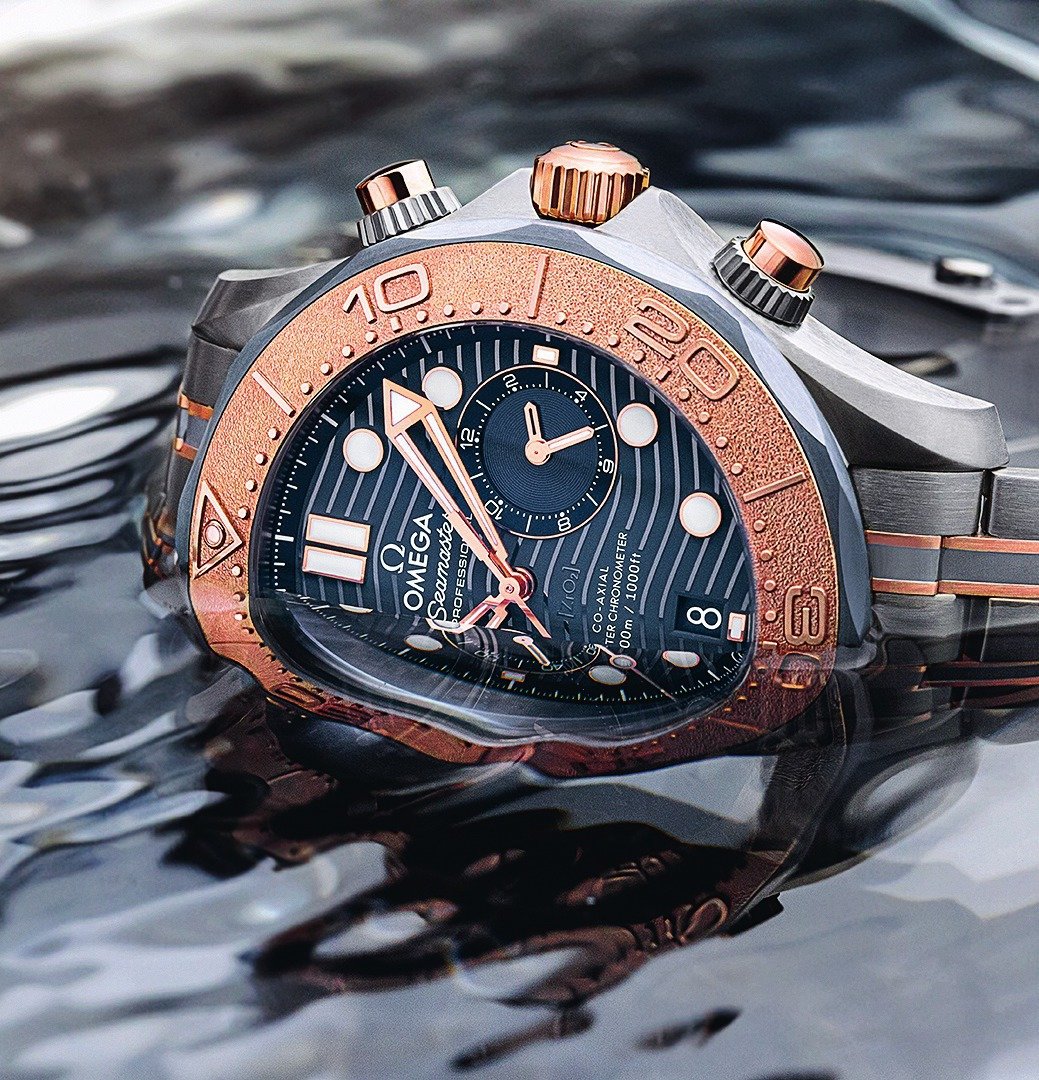
The Seamaster Apnea, which was presented in 2003, is a chronograph specially designed for freedivers. It displays the dive time by means of seven round windows. When the chronograph is switched on, the first window begins to turn red. Each window represents 1 minute of elapsed time, so after 7 minutes have passed, all the windows have turned red. Afterward, the red color begins disappearing from the first window. In this way, the diver can clearly read off a maximum of 14 minutes. To further improve readability, all subdials were omitted; only the central elapsed-seconds hand runs when the chronograph is running.
Characteristic features preserved by the Seamaster Diver 300m are the wave pattern on the dial, skeletonized swordshaped hands, the wave-shaped silhouette of the rotating bezel, the manually operated helium-release valve at the 10 and the complex nine-row metal bracelet. Today, the dial and the bezel’s scale are now made of ceramic and a laser is used to engrave the waves. Models made of exotic materials were also available. For example, as early as 1993, the first year of the Seamaster Diver 300m, there was a chronograph in the unusual combination of rose gold, titanium and tantalum. Tantalum is a rare graphite-gray metal that is biocompatible and often used for implants. In 2020, Omega revived this unconventional chronograph. The bezel and the narrow intermediate links of the bracelet were again made of tantalum, the dive-time scale and the other links of the bracelet were made of rose gold (now Omega’s proprietary Sedna gold); the rest of the case and the bracelet were made of titanium.

Omega introduced another line of diving watch in 2005. The Planet Ocean took up the design of the first Seamaster 300 from 1957, but with a more modern look and with blue and orange as its color scheme. With high water resistance to 600 meters and a co-axial movement, it has state-of-the-art highmech qualities. It was followed by models with cases made of ceramic, which were sometimes colored.
In April 2019, Omega set out to break a new depth record, when the brand sent three examples of the Seamaster Planet Ocean Ultra Deep Professional concept watch to the bottom of the Mariana Trench in the Pacific Ocean. Explorer Victor Vescovo’s descent to 10,935 meters below sea level was the deepest dive ever achieved by a human being or a watch. Two of these 52-mm titanium watches were attached to the submersible’s robotic arm; the third was affixed to a data acquisition unit called the lander. With this ultra-deep dive, Omega surpassed the 10,916-meter depth record that had been set by Rolex and the Trieste submersible in 1960.

In 2022, Omega presented the Seamaster Planet Ocean Ultra Deep as a series watch, with a water resistance of 6,000 meters. One model’s case is made of titanium while the three other versions have cases crafted from a new, extremely corrosion resistant and anti-allergenic alloy of stainless steel called O-Megasteel. All four watches are 45.5 mm in diameter, 18.12 mm in height and powered by chronometer-certified, antimagnetic Master Chronometer Caliber 8912 with automatic winding and a 60-hour power reserve. Prices start at $11,200 on a rubber strap (Ref. 215.32.46.21.06.001).
Omega began building dive watches early in its long history and has developed a colorful range of models. Time and again, the brand has reintroduced historically significant watches. It also continues to improve the technologies used in movements and cases, in order to keep offering more. James Bond has given dive watches a big boost, so we’re curious to see if the next 007 will wear an Omega on his wrist.
To learn more about Omega, click here, and to subscribe to the WatchTime print magazine, click here.

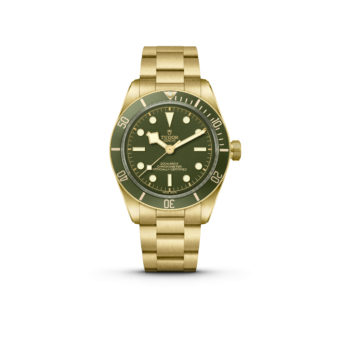
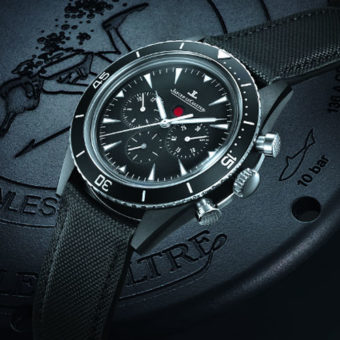
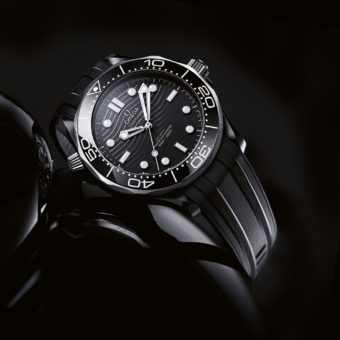
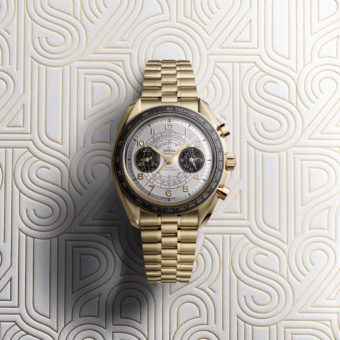
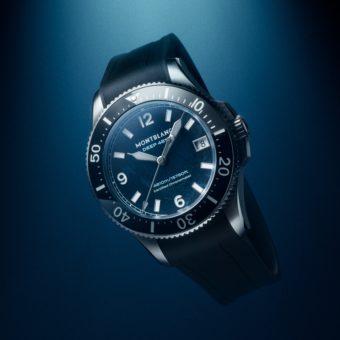
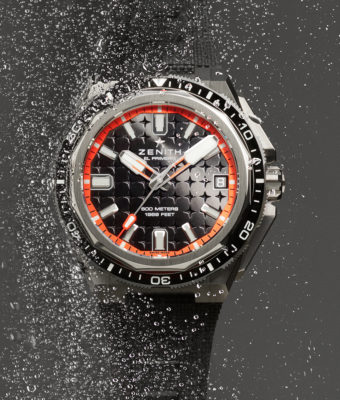
I have a Omega Seamaster 300 from 1960 and one which is 33 years old and still working.